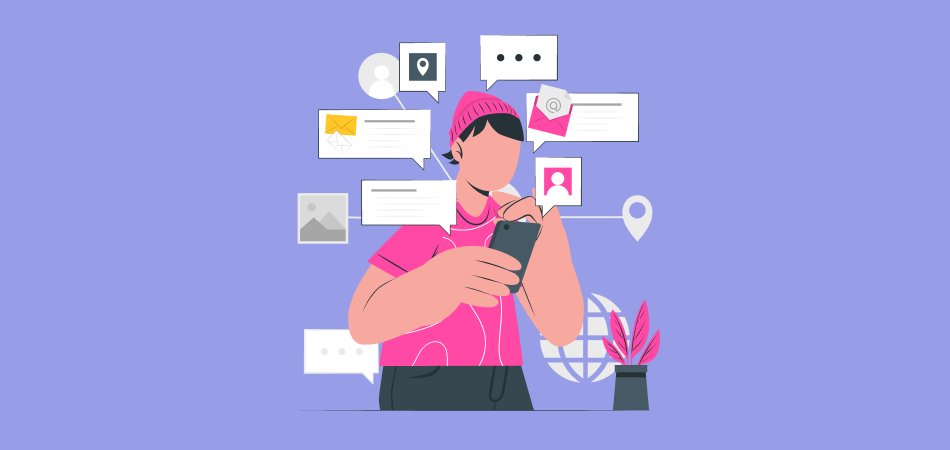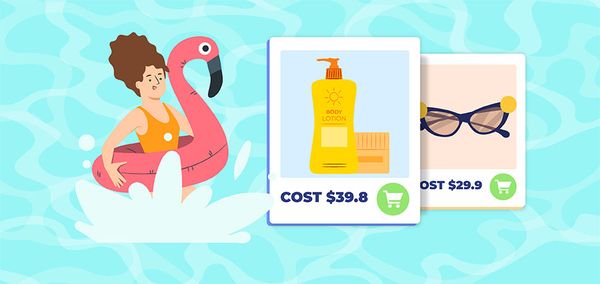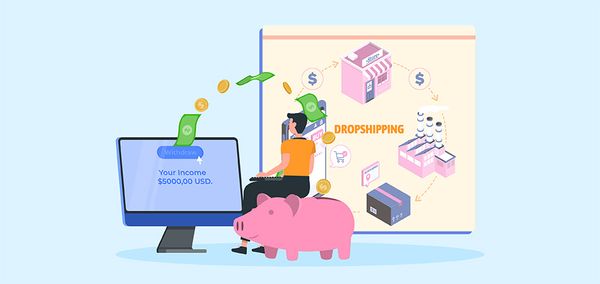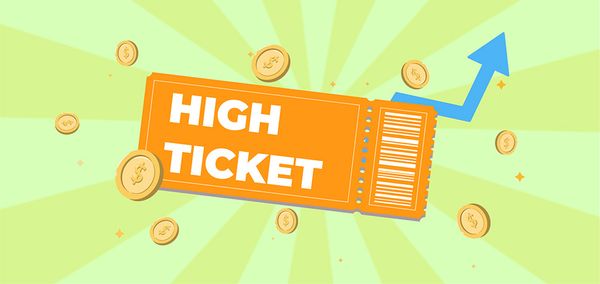Types of Email: Tips and Examples for Effective Communication

Email has emerged as the dominant form of written communication in our personal and professional spheres. However, the ubiquity of email also means it can be easy to fall into bad habits or use the wrong approach for the situation at hand. To communicate effectively and make the best impression, it's important to understand the different types of emails and tips to utilize each one.
What Is an Email
An email is a written electronic message sent from one person or organization to one or more recipients via the Internet. Emails can contain text, images, links, attachments, and other rich media elements.
The key components of a standard email include:
- Subject line - A concise summary of the email's purpose that helps the recipient quickly grasp the topic.
- Salutation - The opening greeting, such as "Dear [Name]," "Hello," or "Hi there."
- Body - The main content of the email where you convey your message, request, or information.
- Signature - Your closing, which may include your name, title, contact information, and/or a professional tagline.
- Attachments (optional) - Files you've included to supplement the email's content.
Emails can serve a wide range of communication needs, from the purely functional to the more personal and relationship-building. Understanding the different types of emails and best practices for each one will enable you to craft more effective messages that get your point across and achieve the desired outcome.
Different Types of Email (Tips & Examples)
Different types of emails serve different purposes in your overall communication strategy. Let's explore 10 key email types and how to make the most of each one.
1. Welcome Email
The welcome email is typically the first touchpoint a new subscriber has with your brand after signing up for your email list. This is your opportunity to make a great first impression and set the tone for future communications. The main purpose of a welcome email is to introduce your brand, remind the subscriber of the value they'll receive, and invite them to take the next step, whether that's completing their profile, making a purchase, or engaging with your content.
Writing Tips
- Thank the subscriber for joining your list and expressing your excitement to have them onboard.
- Briefly explain who you are and what your brand offers.
- Highlight the key benefits of being a subscriber, such as exclusive content, members-only discounts, or early access to new products.
- Include a clear call-to-action that aligns with your business goals, such as visiting your website, following you on social media, or making a purchase.
- Keep the overall tone friendly, warm, and conversational.
Example
Welcome to the [Brand] family!
We're so glad to have you join us. As a subscriber, you'll get access to exclusive deals, behind-the-scenes content, and the latest updates on all things [industry].
To get started, head over to our website and check out our most popular products.
Let me know if you have any other questions - I'm here to help!"
2. Transactional Email
Transactional emails are triggered by a specific customer action, such as a purchase, or account update, or password reset. While these types of emails may not be the most exciting, they serve a critical function in the customer experience. The goal of a transactional email is to provide the recipient with important information clearly and concisely.
Writing Tips
- Keep the content focused on the transaction at hand, avoiding promotional messaging.
- Use a clean, straightforward layout that's easy to scan and understand.
- Include all relevant details like order numbers, shipping information, or account changes.
- Consider adding a relevant cross-sell or upsell opportunity, but don't overdo it.
- Maintain a professional yet friendly tone throughout the message.
Example
[Order Confirmation]
Thank you for your recent purchase from [Brand]!
Your order number is #12345 and will be shipped within 2-3 business days.
Let us know if you have any other questions.
3. Product Release Email
When your business launches a new product or feature, a product release email is an excellent way to generate buzz and drive sales. The primary purpose is to create excitement around the offering and convince recipients that they need it. These emails should highlight the key benefits, showcase visuals, and provide a clear call-to-action for learning more or making a purchase.
Writing Tips
- Lead with the most compelling benefit or use case for the new product.
- Use high-quality, eye-catching imagery to showcase the product.
- Emphasize what makes this new offering unique or superior to alternatives.
- Offer an introductory discount or promotion to incentivize immediate action.
- Create a sense of urgency by mentioning a limited-time offer or low inventory.
Example
It's Here! Introducing the All-New [Product Name] from [Brand]
The innovative [key benefit] you've been waiting for is finally here. With its sleek design and advanced [feature], the [Product Name] is a game-changer in the [industry].
For a limited time, get 25% off your order. Claim your discount now before it's gone!
4. Educational Email
Positioning your brand as an industry thought leader can go a long way in building trust and authority with your audience. Educational emails serve this purpose by sharing valuable, informative content that addresses your subscribers' pain points and interests. The goal is to demonstrate your expertise while driving engagement and generating leads.
Writing Tips
- Identify topics that align with your audience's needs and align with your business objectives.
- Provide tactical, actionable advice that your subscribers can immediately apply.
- Use an engaging, conversational tone to keep readers interested and invested.
- Include visuals like images, infographics, or screenshots to break up the text.
- Conclude with a relevant call-to-action, such as downloading a guide or signing up for a webinar.
Example
5 Essential SEO Tips to Improve Your Website's Visibility
As a small business owner, you know how important it is to rank highly in search engine results.
In this exclusive email, I'm sharing five proven SEO strategies that can help boost your online visibility and drive more qualified traffic to your website.
Let's dive in...

|
Place Orders to AliExpress In Seconds DSers Bulk Order - Place 100s of orders to AliExpress in a few seconds with a just few clicks |
5. Privacy Policy Update Email
Privacy and data security are top-of-mind concerns for most consumers today. When your business and updates its privacy policy or data collection practices, it's important to proactively communicate these changes to your subscribers. The goal of a privacy policy update email is to maintain transparency, build trust, and ensure compliance.

|
Manage Multiple Stores In One Account Multiple Stores Management - Link and manage multiple stores on different platforms in one place |
Writing Tips
- Explain the updates in clear, easy-to-understand language, avoiding legal jargon.
- Emphasize your commitment to protecting your subscribers' personal information.
- Outline the specific changes being made and how they may impact the subscriber experience.
- Provide links or instructions for accessing the full updated privacy policy.
- Assure subscribers that no action is required on their part unless otherwise specified.
Example
An Important Update to Our Privacy Policy
At [Brand], we're committed to being transparent about how we collect and use your data. That's why we're writing to inform you of some recent updates to our privacy policy. The key changes include:
- Expanded data collection to include [new data type]
- New regulations around [specific policy update]
- Improved data encryption and security measures
You can review the full updated policy by visiting [link]. As always, the privacy and security of your information is our top priority. Please let us know if you have any questions.
6. Promotional Email
Promotional emails are a staple in any email marketing strategy, serving as a direct way to highlight special offers, sales, and other incentives to drive revenue and conversions. These emails should create a sense of urgency and excitement to encourage immediate action from subscribers.
Writing Tips
- Lead with your most compelling offer, discount, or promotion.
- Use scarcity tactics like limited-time availability or low inventory to spur action.
- Segment your audience and personalize content based on their past behavior.
- Include eye-catching visuals that showcase your products or offerings.
- Make your call-to-action clear and prominent, with easy access to your website or sales page.
Example
Last Chance: 50% Off Sitewide for the Next 24 Hours
Time is running out to take advantage of our biggest sale of the year! For the next 24 hours only, enjoy 50% off your entire order at [Brand].
Whether you've been eyeing our best-selling [product], or need to stock up on [complementary items], now is the perfect time to shop and save.
This flash sale ends tonight at midnight, so don't wait. Click below to start shopping and secure your discount before it's gone!
7. Abandoned Cart Email
When a customer adds items to their online shopping cart but doesn't complete the purchase, an abandoned cart email can be an effective way to re-engage them and salvage the sale. The goal is to remind the customer of the items they left behind and provide an incentive for them to return and finish their order.
Writing Tips
- Act quickly - send the first email within a few hours of the abandoned cart.
- Highlight the specific items the customer left in their cart, including images.
- Emphasize the value or scarcity of the items to create a sense of urgency.
- Offer a special discount or promotion to encourage the customer to complete their purchase.
- Include clear, prominent calls to action that make it easy for the customer to return to their cart.
- Consider offering free shipping or an extended return policy as an added incentive.
Example
Oops, you left something behind! 🤔
Hi [First Name], I noticed you added a few items to your cart at [Brand] but didn't complete your purchase.
In case you forgot, here's what's waiting for you:
[Product 1] x 1
[Product 2] x 2
[Product 3] x 1
To make sure you don't miss out, we're offering free shipping on your order if you complete your purchase in the next 24 hours. Click below to finish checking out and claim your discount.
8. Reengagement Email
Reengagement emails are designed to re-establish contact with subscribers who have become inactive or disengaged with your brand. The goal is to win back their interest, remind them of the value you provide, and encourage them to reengage with your content or offerings.
Writing Tips
- Segment your list to identify the right recipients - those who haven't opened or clicked in a while.
- Use an attention-grabbing subject line to pique their curiosity and get them to open.
- Remind them of the benefits they'll receive as an active subscriber or customer.
- Offer an incentive or special promotion to give them a reason to reconnect.
- Ask questions or include a clear call to action to prompt a response.
- Express genuine interest in understanding why they've become disengaged.
Example
We Miss You! 😔 [First Name], It's Been a While…
Hey there, [First Name]!
It's been a little too quiet from your end lately, and we wanted to check-in.
As one of our most valued subscribers, we miss seeing your name pop up in our inbox and hearing your thoughts on our content.
To win back your attention, we're offering 20% off your next purchase - just for you. All you have to do is click the button below to redeem your discount.
Is there anything we can do to make your experience better? I'd love to hear your thoughts.
Looking forward to reconnecting
9. Newsletter Email
Newsletter emails are a powerful way to keep your audience informed, educated, and engaged with your brand on an ongoing basis. These emails typically feature a collection of content, updates, and announcements packaged in an appealing, easy-to-digest format.
Writing Tips
- Identify a consistent theme, format, or structure to create brand recognition.
- Curate a mix of original content, industry news, and subscriber-contributed material.
- Use captivating headlines, eye-catching visuals, and concise, scannable copy.
- Segment your list and personalize content based on subscriber interests and behavior.
- Include social sharing buttons to encourage readers to spread the word.
- Conclude with a clear call to action, whether it's visiting your website, making a purchase, or engaging further.
Example
Your Weekly [Brand] Insider Update
Hey there, [First Name]!
Welcome to this week's edition of the [Brand] Newsletter, your go-to source for the latest industry trends, expert insights, and exclusive offers.
In this issue:
[Article 1 Headline & Brief Summary]
[Article 2 Headline & Brief Summary]
[Announcement or Promotion Highlight]
Plus, don't miss our most popular content from the past week:
[Most Popular Post Title]
[Second Most Popular Post Title]
As always, we're here to help you [key benefit]. Let me know if there's anything else I can do for you.
Enjoy the read!
[Your Name]
[Brand] Newsletter Editor
10. Seasonal/Holiday Email
Seasonal and holiday-themed emails are a great way to add a timely, festive touch to your email marketing strategy. These could be standalone campaigns or incorporated into your regular newsletter or promotional emails. The goal is to capitalize on heightened engagement and purchasing intent during key seasonal periods.
Writing Tips
- Align your messaging and offers with popular holidays, events, or seasons.
- Use eye-catching holiday-inspired visuals, color schemes, and iconography.
- Offer exclusive, time-limited deals or promotions to create a sense of urgency.
- Highlight seasonal product recommendations or gift guides for your subscribers.
- Incorporate relevant cultural references, traditions, or emotional appeals.
- Ensure your email is mobile-friendly and easy to navigate on the go.
Example
🎄 'This the Season for Savings at [Brand]
Ho, ho, ho! The holidays are right around the corner, and we're getting into the spirit at [Brand].
For the next 2 weeks only, enjoy 30% off your entire purchase when you use the code MERRYSHOPPING at checkout. Whether you're shopping for yourself or looking for the perfect gift, now is the time to take advantage of our biggest sale of the year.
Hurry - this special discount ends on December 24th, so don't delay. Click below to start filling up your sleigh!
Final Words
Crafting impactful emails that resonate with your audience is an essential skill in today's communication landscape. The tips and examples for different types of email provided above can help you elevate your email marketing efforts. Remember, effective emails are not just about the content - they also require thoughtful strategy, compelling design, and a genuine connection with your recipients. So what are you waiting for? Start planning your next thank-you, announcement, or seasonal email campaign today!












 Company
Company
 Why Choose DSers
Why Choose DSers
 Blog
Blog
 Help Center
Help Center




 Live Chat
Live Chat